Lesicheri Obelisk – Enigmatic Ancient Roman Structure – Bulgaria’s Tallest Surviving Landmark
A. Sutherland - AncientPages.com - A remarkable landmark, a surviving 14-meter ancient Roman Obelisk is located near the Veliko Tarnovo district village of Lessicheri in the North-Central region of Bulgaria.
The Lesicheri pillar and the ruins of the second one (after Kanitz 1882, 5, engraving # 2). The Lesicheri Pillar and the Transfer of Funerary Architecture Trends from Bithynia to Roman Thrace - D. Delchev, Milena Raycheva
Following the first scholarly publication in 1882, the so-called Lesicheri Obelisk, located near a historic site Nicopolis ad Istrum has been widely discussed in the literature as a component of a more extraordinary complex related to a religious cult or could be sepulchral.
The thousand-year-old history and culture of the region of Tarnovo are traced out there.
Veliko Tarnovo - the capital of Bulgaria in the 12th- 14th century - is one of the oldest settlements in Bulgaria, with a history of more than five millennia. The first traces of human presence, dating from 3,000 BC, were discovered on Trapezitsa Hill.
Ancient Roman Obelisk, one of two originally, was part of a mausoleum-turned-shrine near Bulgaria's Lesicheri. Once, a second identical obelisk existed nearby, and its ruins were identified by visiting geographers and archaeologists in the late 19th century.
This remarkable 13.8-meter column of painstakingly hewn blocks of local stone is also part of the memorial tomb of Quintus Julius, a prominent Roman figure from the nearby large city of Nicopolis ad Istrum, who lived in the 2nd century AD, according to an ancient inscription.
Quintus Julius was a Roman senator who held several posts in the emperor's service. Both the emperors Claudius and Nero well thought of this prestigious individual.
He was also a prominent supporter of a Roman emperor, Vespasian, who reigned from AD 69 to 79. From history books, we remember him as the fourth and last emperor who reigned in the Year of the Four Emperors. Quintus Julius was rewarded by being made consul only a few months after Vespasian arrived in Rome. Emperor Vespasian needed Quintus Julius' assistance and trusted him. Later, Quintus held other civic and military positions, including three governorships, pontifex, and urban prefect of Rome.
Roman Obelisk, Lesicheri, Bulgaria. Image credit: Powerfox - CC BY-SA 4.0
Felix Philipp Kanitz (1829 – 1904) was an Austro-Hungarian geographer, ethnographer, and archaeologist, who conducted a thorough research of the South Slavs, particularly those in modern Serbia and Bulgaria. Kanitz carefully examined the Obelisk area and found and described the remains of a second, destroyed pillar on which the stones lay on the ground. He also examined a fragmentary inscription found near the Lesicheri pillar and sketched it. Unfortunately, the document was lost.
The scientists also discovered fragments of marble reliefs and parts of a large monumental building that once existed there.
According to his research, the Bulgarians from the surrounding villages used to call the monument "Pillar" while the Turkish name was "Dikilitash" (Obelisk). Kanitz associated the structure with the Roman building style and mistakenly assumed the Lesicheri Obelisk was a part of the Roman aqueduct.
Legend Of Two Boys Who Were In Love With The Same Girl
Putting history aside, one can also mention the legend of the Lesicheri column.
Locals say the Obelisk is Markov Kamak or The Stone of Marko. According to the story, Marko and another boy were in love with the same girl.
The young woman liked the other man better than Marko but decided to set up a competition for her two suitors. She said she would marry the one who could build the tallest and strongest pillar. Marko was a powerful man who constructed a magnificent massive pillar for the young lady. The other boy was not a skilled builder, and his creation was far less impressive. Marko won the competition, but the girl still wanted to marry the other boy and announced him as the winner. Marko was furious and smashed his rival's small Obelisk in rage before walking away. The legend explains what happened to the other Obelisk, but history tells a different story.
Were The Two Obelisks Related To Emperor Trajan's Triumph Over The Dacians?
Later in the 19th century, it was theorized that two obelisks belonged to a colonnade built at the beginning of the 2nd century to honor the triumph of Emperor Trajan (98-117) over the Dacians. Several decades later, the enigmatic remains of one of the obelisks were almost lost forever. In 1937, locals used the broken pillar and the surrounding fragments to construct a local road. In 1948, the taller column (we can see today) was also in danger of being totally devastated when the villagers tried to remove it with ox carts or blow it up.
Fortunately, they failed.
The Obelisk and its long-lost twin structure belonged to the family mausoleum of Quintus Julius, a cult priest to the emperor and a Roman senator who held several posts in the emperor's service and lived in the 2nd century in Nicopolis ad Istrum, near the modern Nikyup village.
Proper excavations of the site began in the 1990s, and it was then that the Obelisk was adequately explained.
The Obelisk and its long-lost twin structure belonged to the family mausoleum of Quintus Julius, a cult priest to the emperor and a Roman senator who held several posts in the emperor's service and lived in the 2nd century in Nicopolis ad Istrum, near the modern Nikyup village.
The mausoleum was an impressive complex with a pediment of stone, and two statues of lions guarded its entrance. There were probably statues of the deceased, together with one of the Thracian God Rider (also the "Thracian horseman" (or "Thracian Rider"), a motif frequently used in reliefs of the Hellenistic and Roman periods in the Balkans, mainly Thrace, Macedonia, Thessaly, from the 3rd century BC to the 3rd century AD. The temple survived until the 4th century. Then, it was most probably destroyed by some fanatics when the Roman Empire was Christianized. There were times when barbarian invasions still plagued the provinces in today's Northern Bulgaria.
The Lesicheri Obelisk - Bulgaria's tallest surviving landmark still stands and guards its history.
Written by – A. Sutherland - AncientPages.com Senior Staff Writer
Copyright © AncientPages.com All rights reserved. This material may not be published, broadcast, rewritten or redistributed in whole or part without the express written permission of AncientPages.com
Expand for referencesMore From Ancient Pages
-
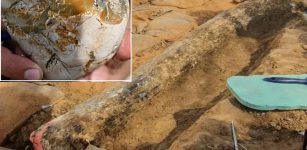 A Half-A Million-Year-Old Well-Preserved Elephant Tusk Unearthed In Israel
Archaeology | Sep 2, 2022
A Half-A Million-Year-Old Well-Preserved Elephant Tusk Unearthed In Israel
Archaeology | Sep 2, 2022 -
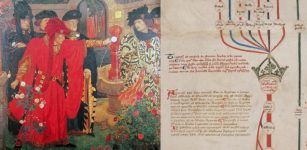 Unique Canterbury Roll – Ancient Manuscript Reveals Its Secrets About History Of England
Archaeology | Jan 5, 2018
Unique Canterbury Roll – Ancient Manuscript Reveals Its Secrets About History Of England
Archaeology | Jan 5, 2018 -
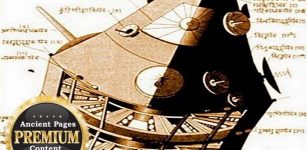 Vimanas – Flying Machines Soaring Through Ancient Sky Of India
Featured Stories | May 27, 2014
Vimanas – Flying Machines Soaring Through Ancient Sky Of India
Featured Stories | May 27, 2014 -
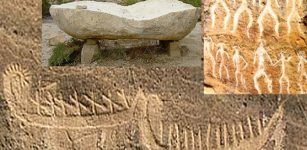 Gobustan’s Petroglyphs And Yalli Dancers’ Amazing Musical Stone
Featured Stories | May 29, 2023
Gobustan’s Petroglyphs And Yalli Dancers’ Amazing Musical Stone
Featured Stories | May 29, 2023 -
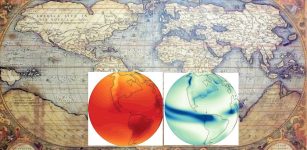 Ancient Maps Reveal What Will Happen With Our Climate In The Future – Scientists Say
Archaeology | Oct 12, 2022
Ancient Maps Reveal What Will Happen With Our Climate In The Future – Scientists Say
Archaeology | Oct 12, 2022 -
 Unknown Ancient Structures Discovered At Machu Picchu By LIDAR
Archaeology | Mar 29, 2022
Unknown Ancient Structures Discovered At Machu Picchu By LIDAR
Archaeology | Mar 29, 2022 -
 Mystery Of Panxian Cave: How Could Gigantic Animals Reach A Mountain Cave Located Over 1600m Above Sea Level?
Featured Stories | Jul 1, 2014
Mystery Of Panxian Cave: How Could Gigantic Animals Reach A Mountain Cave Located Over 1600m Above Sea Level?
Featured Stories | Jul 1, 2014 -
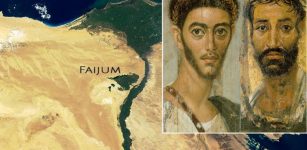 Faiyum Mummies: Long Lost Secrets Of A Mummy’s Portrait
News | Nov 24, 2020
Faiyum Mummies: Long Lost Secrets Of A Mummy’s Portrait
News | Nov 24, 2020 -
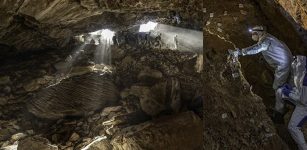 First Americans Reached The Continent 15,000 Years Earlier Than Previously Thought – Chiquihuite Cave Reveals
Archaeology | Jul 22, 2020
First Americans Reached The Continent 15,000 Years Earlier Than Previously Thought – Chiquihuite Cave Reveals
Archaeology | Jul 22, 2020 -
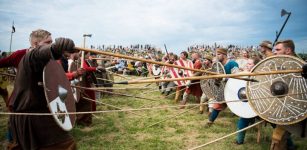 Secrets Of Viking Age Shields Finally Revealed
Civilizations | Oct 7, 2020
Secrets Of Viking Age Shields Finally Revealed
Civilizations | Oct 7, 2020 -
 Scientists In Antarctica Encounter Something Very Strange
Featured Stories | Mar 9, 2020
Scientists In Antarctica Encounter Something Very Strange
Featured Stories | Mar 9, 2020 -
 Skull Discovered In Ancient City Of Euromus Shows Neurosurgery Performed 2,200 Years Ago
Archaeology | Aug 2, 2019
Skull Discovered In Ancient City Of Euromus Shows Neurosurgery Performed 2,200 Years Ago
Archaeology | Aug 2, 2019 -
 4,000-Year-Old Serpent-Shaped Wooden Stick Unearthed in Southern Finland
Archaeology | Jun 30, 2021
4,000-Year-Old Serpent-Shaped Wooden Stick Unearthed in Southern Finland
Archaeology | Jun 30, 2021 -
 Humans Carry DNA From An Ancient, Unidentified Ancestor – Scientists Say
DNA | Apr 13, 2023
Humans Carry DNA From An Ancient, Unidentified Ancestor – Scientists Say
DNA | Apr 13, 2023 -
 Mysterious Underground City In Brazil Could Re-Write Ancient History – Unexplained Artifacts And Skeletons – Part 1
Featured Stories | Jan 23, 2022
Mysterious Underground City In Brazil Could Re-Write Ancient History – Unexplained Artifacts And Skeletons – Part 1
Featured Stories | Jan 23, 2022 -
 Scientists Say Large Mammals Shaped The Evolution Of Humans – Here Is What Happened
Featured Stories | Jan 27, 2023
Scientists Say Large Mammals Shaped The Evolution Of Humans – Here Is What Happened
Featured Stories | Jan 27, 2023 -
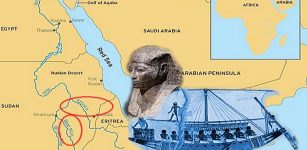 Mysterious Location Of The Amazing Land Of Punt – Can This Puzzle Be Solved One Day?
Featured Stories | Jul 18, 2016
Mysterious Location Of The Amazing Land Of Punt – Can This Puzzle Be Solved One Day?
Featured Stories | Jul 18, 2016 -
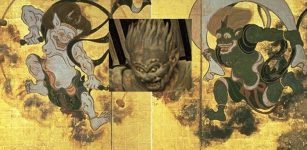 Raijin: Shinto God Of Thunder And Lightning With Three Fingers Representing Past, Present And Future
Featured Stories | Feb 10, 2020
Raijin: Shinto God Of Thunder And Lightning With Three Fingers Representing Past, Present And Future
Featured Stories | Feb 10, 2020 -
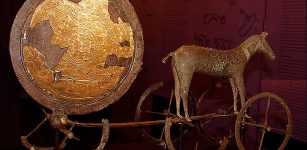 Sun Chariot – Powerful Symbol Of Bronze Age Cosmology
Ancient Symbols | Feb 28, 2018
Sun Chariot – Powerful Symbol Of Bronze Age Cosmology
Ancient Symbols | Feb 28, 2018 -
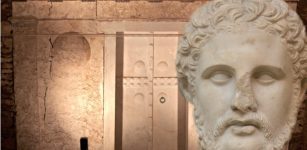 Royal Tombs Of Alexander The Great’s Family At Vergina, Greece Finally Identified
Archaeology | Jan 31, 2024
Royal Tombs Of Alexander The Great’s Family At Vergina, Greece Finally Identified
Archaeology | Jan 31, 2024



